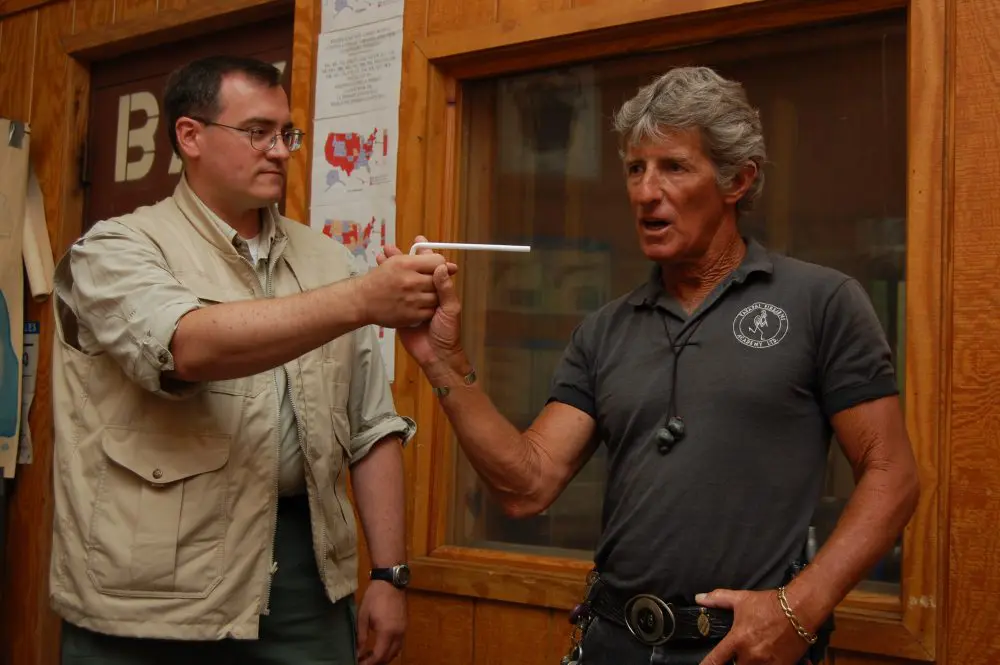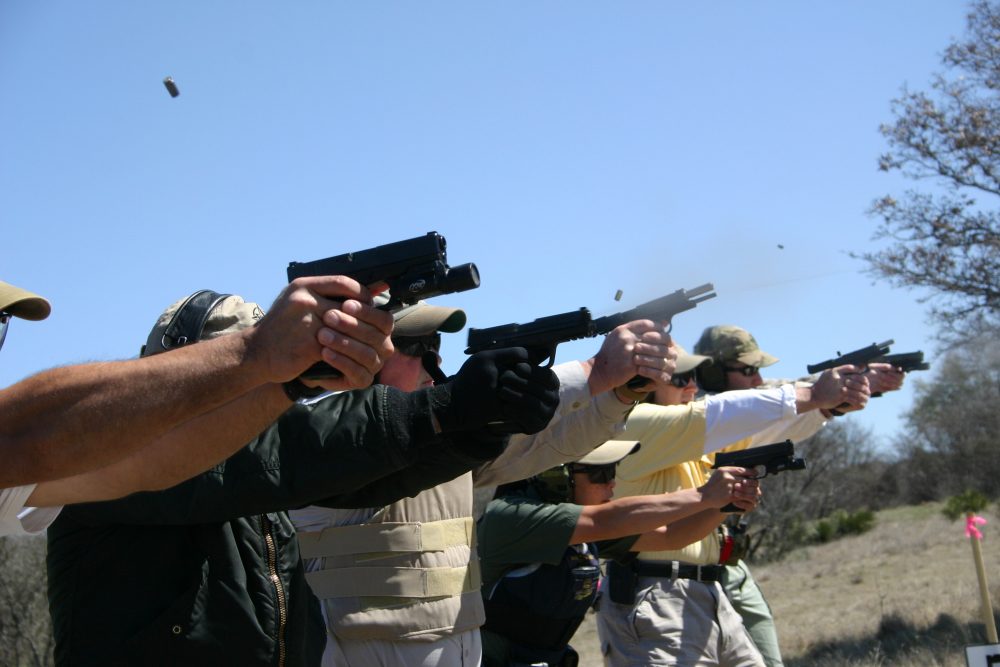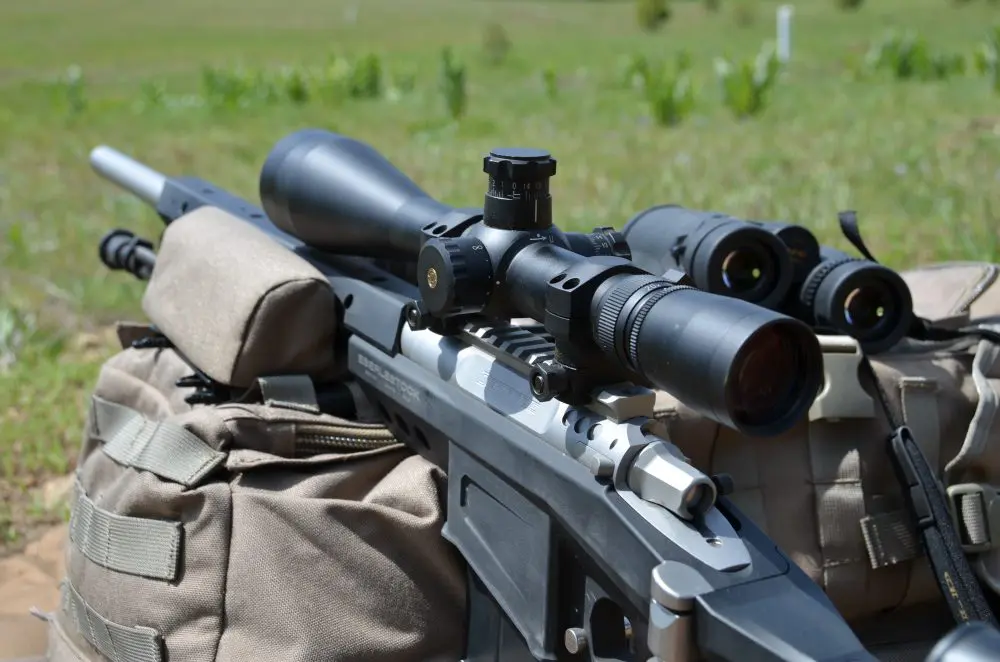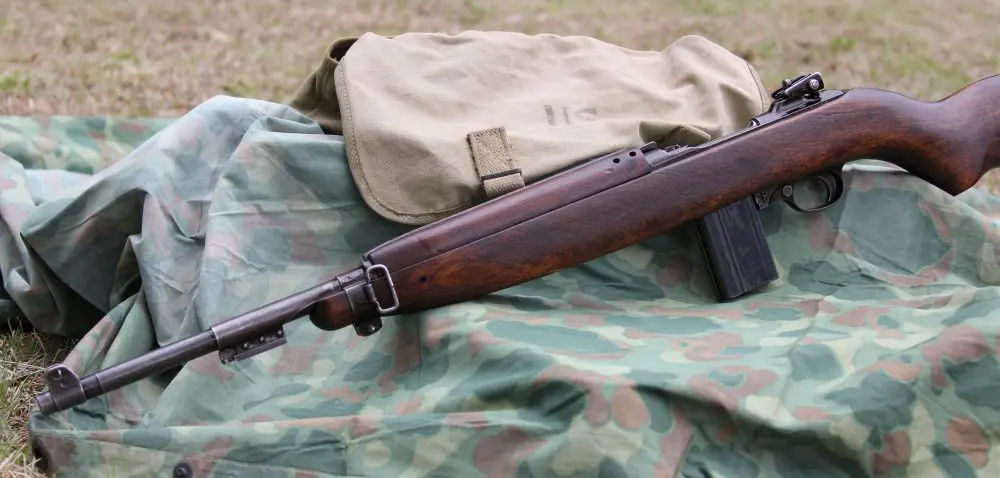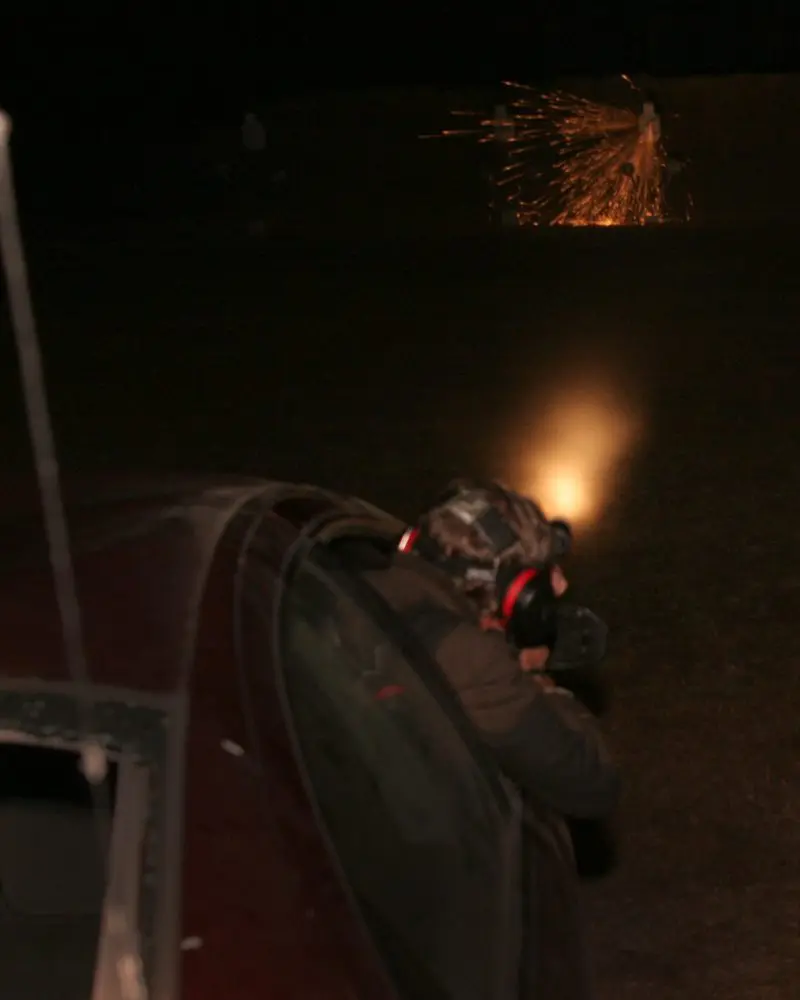I had attended an EAG Carbine Operator Course and used a basic AKM pattern rifle (BATTLEFIELD PICK-UP Part I, October 2011 S.W.A.T.) in order to gain some practical insights into employing the world’s most ubiquitous assault rifle. I’d learned how to run the rifle against commonly required fighting scenarios and came away solidly impressed with the Kalashnikov as a basic weapon.
Over the past few months, I have been working with and around various armed groups using the AK in the Helmand Province of southwest Afghanistan during the fighting season.
I quickly learned that the “true” battlefield pick-up looks a little different than the AK a shooting enthusiast stateside might take to the range and form conclusions around.
Of course, generalizations can be dangerous and may not readily apply elsewhere, but they might be useful to some who are preparing for combat in this part of the globe or another similar to it.
I can confidently make four sweeping pronouncements about a battlefield AK in the Helmand. These are that the rifle you are able to pick up in a pinch will not be zeroed, will be modified, will be neither clean nor properly lubricated, and is unlikely to have additional magazines/ammo.
The greatest likelihood is that all four items will be true, although you may beat the odds on one or two points. However, you are more likely to find a four-leaf clover among the poppies than a rifle that is stock, cleaned and lubed, well zeroed, and with a chest rack of decent ammo/ magazines!
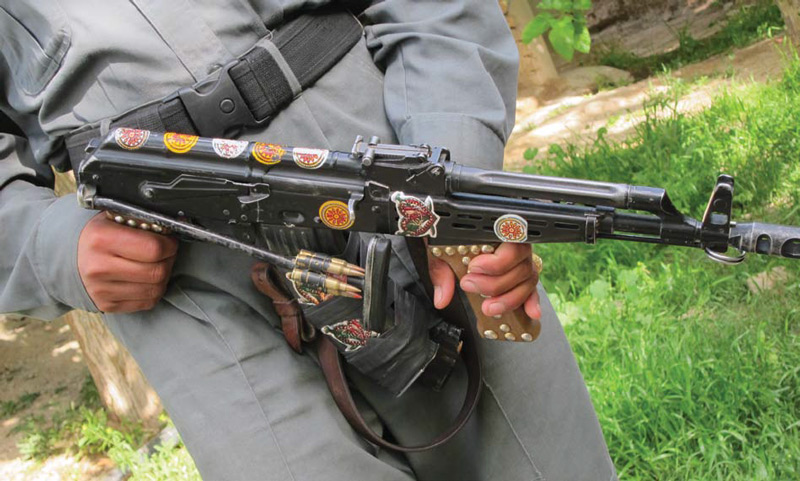
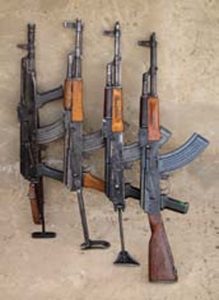
Table of Contents
ZERO ZEROES
As mentioned in Part I, the sights on the AK are wholly marginal and require tools to address windage or true the elevation ladder to the marked scale. I have been around the arming and training of a variety of security forces and have yet to see anyone with an AK front sight adjustment tool.
I asked a local familiar with a wide variety of militias and security forces if any of these groups ever zero their AKs or train with them, and he was emphatic that this was simply not done. Some International Security Assistance Force or U.S. forces insist on a rough zero for their trainees, but the standards are exceedingly loose: the most stringent I have seen is on a sheet of standard letter paper at 25 yards.
Tales of mujahideen accuracy in the 1980s aside, there is little local tradition to support an emphasis on zeroing. The people of the Helmand are largely farmers, with no game to hunt as in the northern Afghan provinces. Recreational shooting is a foreign concept, with ammunition generally preserved for fighting or the occasional celebratory burst at a wedding party. The intuitive Pashtun sense of employment of the AK tends toward automatic fire and a coarse alignment from either hip or shoulder.
A casual look around at slung or stacked rifles will reveal rifles with the elevation tangent set randomly anywhere from 0 to 500 yards. Combined with the significant trajectory of the universal 7.62x39mm chambering, hits at anything past hailing distance become challenging.
The sights themselves do not help. The tiny notch and large post atop a nearly bare metal and well dingedup rifle do not contribute to precise placement. The glare and reflections under a desert sun simply increase the difficulties associated with AK sights under ideal range conditions.
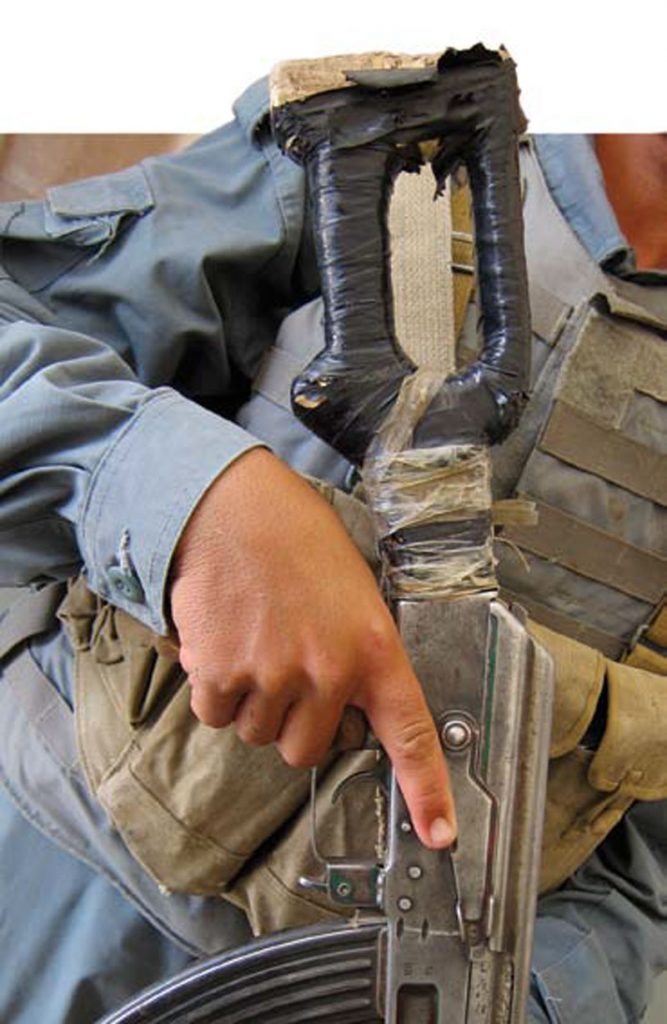
What does this mean?
Be prepared and aware that a pickup should be verified for zero at the first opportunity. In the excitement before then, consider bracketing shots where the distance and target require precision. The “guaranteed hits” bracket for vitals is probably only slightly beyond buckshot range, and “should hit meat” is less certain for every pace beyond 50.
MODS
There is a great likelihood that your newly acquired AK will have been “combat customized” in some fashion. It is just as likely that the mods to the rifle will in no way contribute to its effectiveness as a weapon and may actually detract from its utility.
I’ve joked for months about photographing a coffee-table book of crazy “jinga’d” AKs I’ve encountered. Ornamentation is huge, and the personality of the individual fighter seems to indicate whether they stick with the time-tested brass tacks and copper wire wrap or go more flamboyant with pom-poms and brightly colored plastic sheeting wrapped around the rifle. Strangely, linked 5.56mm ammunition is a popular add on/wrap around, because you never know when that might come in handy!
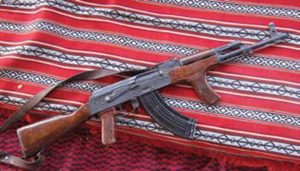
Some rifle art is harmless and purely decorative, while others may just throw off the feel slightly with whatever is wrapped around the gun. However, it is not uncommon for the plastic/ animal skin/pom-poms to impede line of sight.
Frequently, mods are simply shadetree repairs to broken pistol grips, stocks, etc. The quality of workmanship is generally poor despite the ingenuity required given the lack of materials. Seeing some of the crude repairs leaves me ever more thankful for Western logistics.
Among the more popular mods to the Helmand AK is “pistol-izing” the rifle by removing the buttstock. I asked several fighters how they intended to hit Talibs from far away, and they showed me their best Hollywood full-auto-from-the-hip pose and ensured me it was no drama.
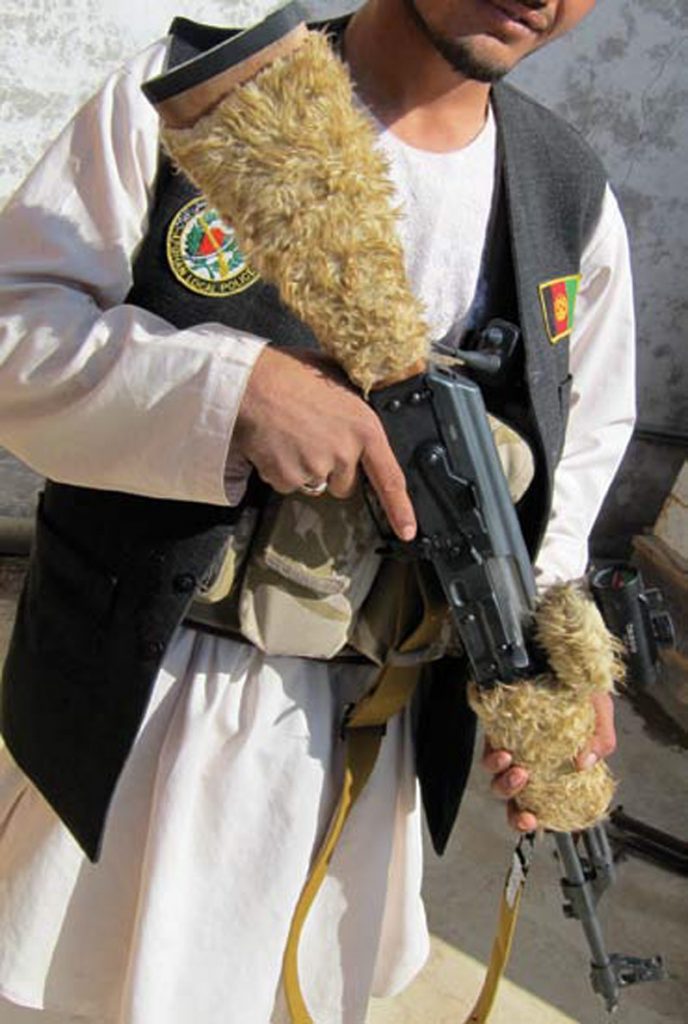
The mod is common enough that I’d suggest no foreign weapons preparation is complete without the shooter firing a stockless AK and working out which compromise position will best allow enough hits to acquire a better weapon.
IT’S AN AK, WHY KEEP IT CLEAN?
The Helmand is a dusty place. Fine layers of multiple aggregates of dust and sand coat anything that is left exposed. You never appreciate a dust cover as much as when carrying an M4 here.
The AK is legendary for its indifference to harsh environments and poor maintenance, which are tested to the breaking point by those carrying it here. You occasionally see a rifle with a scrap of cloth tied around the muzzle as an end cap to help keep the dust out of the barrel, and the occasional rifle looks to get the odd slapping with a headscarf to beat the dust accumulation away. However, a clean rifle in the Western sense is an oddity. Lubrication is non-existent.
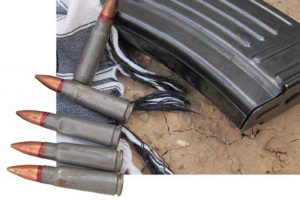
This is one of the poorest areas on the planet, drug trade and all, and oil is a luxury item that doesn’t jump out as essential to wipe down the Kalashnikov’s working parts. If you oiled it, you would then have to keep it clean to stop the dust from gumming up. Racking some of the worn rifles here is a testament to the AK design that they work at all, the action often feeling like there are dust bunnies and bone spurs at every point along the bolt travel.
BEANS
Ammo is readily available, yet not accessible. Although 7.62x39mm rounds are easily purchased anywhere in the province, the government issues very little to the police for fear of them losing/ selling it. The Taliban tend to be ammo poor as well.
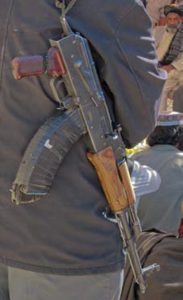
The average “good guy” with an AK has only the magazine in the weapon. Just as the fighters are prone to ditch the stock to make the rifle easier to carry, they are hesitant to carry additional magazines unless they are deliberately going to a fight.
Troopers in high-risk jobs will carry two or three mags, but the rank and file, as well as locals, will settle for what’s in the mag locked into the rifle. This is understandable, because carrying heavy AK mags while in man-jammies is awkward without a chest rack.
The ammo itself is widely variable: predominantly steel cased, it’s from all over the globe. Even the coalition has purchased large lots of exceptionally poor-quality ammo from nearby countries.
Whatever milspec the Soviets had is clearly not being used—some of the cartridges I’ve seen are visibly out of spec or carry dings and dents in the steel cases right out of the box. Since the River Valley has been in a steady state of conflict for decades, some of the ammo in use is significantly older than the men shooting it.
Most of the stoppages in the AKs I’ve seen in Afghan training are directly attributable to the poor ammo quality. With one batch of new Serbian AKs, any slight deformation or ding in the steel case and the bolt would fail to go completely into battery.
The strong temptation was just to whack the bolt handle as a forward assist to close the action the remaining 1/4 inch. This invariably bound the rifle so hard that the bolt could no longer cycle by hand. The rifle would have to be thrust against an armored door or immovable object, catching the bolt handle to cycle the offending bum round out.
The alternative is to place the butt on the deck and “kick-start” the bolt—not an ideal technique on several levels. It is much simpler to treat an out-ofbattery failure as an immediate action and go directly to racking the bolt to get a better round (hopefully) into the chamber.
VARIANTS
Floating around the Helmand are probably examples of every AK produced since the original. The most common are the standard AKM variety from several countries, along with AMD 65-type side-folders, East German “Crutch”-style side-folders, and the odd (but favored) milled receiver underfolder Russian AK/Chinese Type 56.
Interestingly, the Afghans refused to accept issue of a large batch of newish Vz. 58s, insisting that they were inferior and doing without until they could be given AK variants.
Bazaar prices are a good indicator of the value placed on different variants. The most desirable (and expensive) specimens are genuine Russian or Chinese manufactured AKs, with prices in the U.S. $600 range—about two months’ salary for a skilled worker and considerably more for a farmer. Random variants from other countries or beaters can be picked up for $400 or less.
The AK will continue to be the preeminent arm in this region for years to come. Hopefully these ugly truths about the common trends will help good guys who need to fire one that they find lying around.
